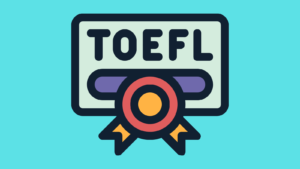How To Improve TOEFL Reading Scores
It’s no secret that intermediate and advanced English Language Learners struggle to improve their proficiency. When an individual continues to put in the same amount of effort, but no longer perceives the same level of growth, it is often referred to as The Plateau Effect. Anyone who has tried to learn a new language or commit to an established exercise routine will have had direct experience with the fact that, over time, the amount of effort we once put into a task is no longer enough to improve.
The Plateau Effect emerges in class and saps student confidence once they prepare for a language exam like the TOEFL. Dissatisfied with their results, students consult books and ask teachers for guidance.
- The response?
- Test taking strategies.
Here are some common stock tips you might have read in books or heard from teachers.
- Identify key words
- Scan the passage
- Beware of modifiers like ‘always’ and ‘never’
- Eliminate choices to improve your odds
Much of this advice is indeed sound, and students lap it up. It seems like a quick solution to a major problem. They memorize all the tips and tricks and go take the test again, armed to the teeth with strategy.
For some, this is enough. They boost their score a couple of points and sing their teacher’s praises. For most, however, the strategies were helpful, yet ineffective.
The problem is that strategy does not improve language comprehension, it improves test comprehension.
The students who benefit most from strategy are the ones who already possess an advanced level of English comprehension. These students just need someone to help organize their knowledge and apply it to the test structure. The rest are left wondering where they had gone wrong.
I didn’t know any of this when I entered the foray of online TOEFL instructors three years ago. and had been teaching TOEFL prep at a language school in midtown Manhattan for a couple of years at that point. I had collected tidbits of information in TOEFL textbooks and online programs, which I would later compile into a TOEFL course curriculum.
The student results however, were lacklustre, particularly in the TOEFL Reading section.
The problem wasn’t the students. They were hardworking and motivated. They had sought me out online to help them improve their score after continued failure. And we had a ton of success with the other sections, but the reading continued to stagnate. And it wasn’t until I dove into the literature that I figured out why.
I was focusing too much on strategy, and not enough on comprehension.
Just so we are on the same page, here is a common piece of advice you might read in a TOEFL book. This is actually from my own TOEFL Mastery Course.
“There are ten different types of TOEFL Reading questions. Every question is multiple choice with four options (a, b, c, d). One type of reading question is a negative detail question. Are you looking for Ways to improve Toefl Reading Score. Here are the steps you need to take to answer negative detail questions.”
1: Make sure you correctly identify the question as a negative detail
2: Identify the key words in the question
3: Go back to the passage and find the sentence with the key word
4: Read before and after the sentence with the key word and check option A
5: Repeat key word identification and check options B, C and D
This is a ton of information for a student to memorize. And, if there are five steps to each question type, and ten types in total, then test takers will have to memorize 50 unique steps for each question type to a test they will never need in the future. And while esoteric TOEFL knowledge may pique my interest, it has little effect on student outcomes.
How To Improve TOEFL Reading Scores – What is the solution?
Active reading
It might be a no brainer to some astute readers in the ELT community, but teaching TOEFL takers to read in an active manner has helped our students realign to the most important aspect of the TOEFL Reading: understanding the passage.
Comprehension comes first, strategy second.
Active reading is such a vague phrase, so I should clarify. For me, it starts with placing active reading in the context of the TOEFL Reading section. The next step is to break the TOEFL Reading section down into manageable chunks. This section of the test contains three academic reading texts, each approximately 700 words. At this point, most teachers would stop here and ask students to actively read each passage. They may ask students to scan the 700-word text, paying careful attention to the title and topic sentence of each paragraph.
That is not very helpful.
In my experience, this type of approach doesn’t work. Even though I primed students with pre-lessons about the benefits of scanning and summarizing, few found it useful. When I asked students to summarize an entire passage, time and again I received blank stares and vague responses.
I had a sneaking suspicion that the culprit was cognitive overload. There was simply too much information for the student to digest. Even though scanning is designed to help students focus, mine were only getting more confused. Not only was there too much content to preview, but it was also a challenge to understand how each topic sentence related to the other without a thorough reading.
I decided to break the passages down even further.
I asked students to summarize individual paragraphs as if they were teaching the same subject to a ten-year-old. In other words, they had to take an academic paragraph from a text you might expect to find in a freshman-level college course, and break it down into one or two sentences that a ten-year-old would understand.
Here’s an example:
The summary is short, simple, and to the point. It includes both the main idea and a few supporting details. There is no hard and fast rule students must follow, only that they summarize in a clear way that even a ten-year-old would understand.
This approach works for the TOEFL because each question is contained in a single paragraph. There are ten different question types in the TOEFL Reading, and besides summary and organization questions, the rest of the questions can be answered by looking at a single paragraph. Students can read a paragraph first, simplify it in their own words, and then answer the questions related to it.
Breaking down the reading passages into manageable chunks of information has been so effective that our school, TST Prep, has created over 200 of these short academic reading passages. You can have your students practice this same skill on this page.
If a student does have trouble summarizing a passage, or misses the main idea, we will talk about it in greater detail, identifying the lexical and grammatical units they could not understand. This is recorded in a journal with follow up activities like vocabulary flashcard creation or further research on the particular subject.
This approach works because students can no longer hide behind strategies. Open-ended summary exercises force students to prove comprehension in their own words. Further still, breaking passages down into paragraphs minimizes the challenge of comprehending an avalanche of academic vocabulary. Particular words, phrases, and grammatical constructions stand out and comprehension problems are easier to identify. The focus shifts from studying the TOEFL to improving reading comprehension, which is the real problem for most TOEFL takers.
For all the readers scanning and skipping to the end, here’s what you were looking for, a quick breakdown of how to improve TOEFL Reading scores:
- Focus more on comprehension, less on strategy
- Break down long passages into separate paragraphs
- Students should summarize and simplify the passage
- Follow-up misunderstandings with targeted practice
Be sure to check out TST Prep’s free academic passages of less than 200 words so your own students can practice active reading strategies in bite-sized chunks. This will ease the cognitive load of standard academic texts.
Do you know a better way of improving reading comprehension of academic text (i.e. extensive reading)?
Or maybe you still believe strategic instruction is the best approach to TOEFL preparation.
Download free resources from Josh




